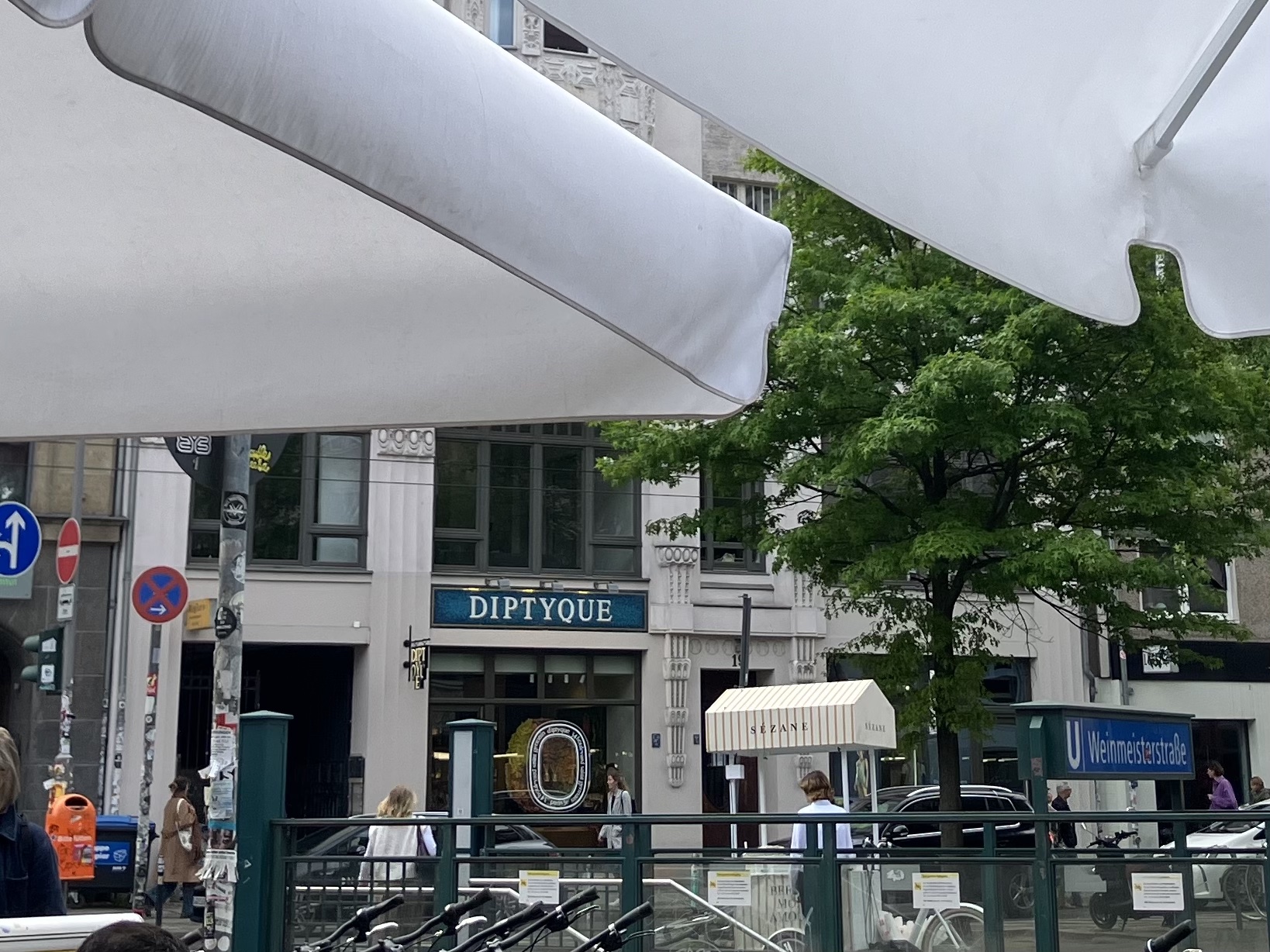It’s a chilly-grey Saturday morning in Berlin. Still early—just before 10—and I’m watching the shops open, and the carnation-sellers in their approximate uniforms of white shirts and black pants arrange and rearrange their cute little cart and buckets of flowers, clumsily deciding on the best spot to promote whatever unneeded brand they are here to promote.
They have settled themselves against the railing that leads down into the Ubahn station. Right next to the tidy line of charcoal-grey dumpsters.
A tall man in a windbreaker with a neat beard eats an ice cream bar as he disappears underground, on his way to wherever he must be.
I wonder how he decided that this chilly morning was the morning for ice cream before 10.
Why ice cream? Why not a pastry, or a bag of cookies? Why not a cigarette?
Maybe he has just quit smoking, and bringing the stick to his mouth again and again reminds him of the companion he is forsaking. Maybe the cold on his tongue soothes the phantom burning.
Four transit workers stand in a circle. The one who can slouches against the railing. They are a closed unit. They are men; generically, unambiguously. Scruffy and solid and ageless. They are men; they wear dark blue trousers with their black jackets, the neon green shoulders functional—visible.
There are two huge white square umbrellas between me and the sky, between me and the top stories of the buildings that create this intersection. In between them I glimpse the white filigree of the bay window, concrete made lace, on a building across the street.
I will move away from this neighborhood in nine days. To be as charitable as I can, my landlords and I hold irreconcilable views about how we share space—whom I may welcome into their space, and on what conditions, and what is owed besides the rent. I will move into someone else’s home for my last month here. It is full of their life—plants and particular pans and watercolors with descriptive German captions (” . . . mit dem Handschuhe in dem Mund und dem Handy in dem Hand . . .”). I will move far away from this neighborhood, and then I will come back early every morning to the building next door to the building with the filigreed window, to study German.
The carnation-sellers—temporary workers, I’m sure, unacquainted with one another and with the brand they are making visible—the carnation-sellers have moved their cart again. They are across the street, against the railing to the Ubahn station. But there are no dumpsters on that side.
There are customers around them now—four young people all in black leather jackets with ’80s silhouettes. One of the young women holds a carnation in a white cone of paper against her leather chest.
A family now walks away—a mother in a trench coat with her tall blond son and his girlfriend. Mother and son both hold carnations, while the girlfriend holds the poison pill—an oversized brochure bearing the same refined stripes as the carnation cart.
I suppose they are not carnation-sellers, then. Carnation-givers? Brochure pushers with carnations for hands.
The yellow M5 tram rumbles by again, squealing lightly as it takes the curve to go up my street.


Leave a Reply